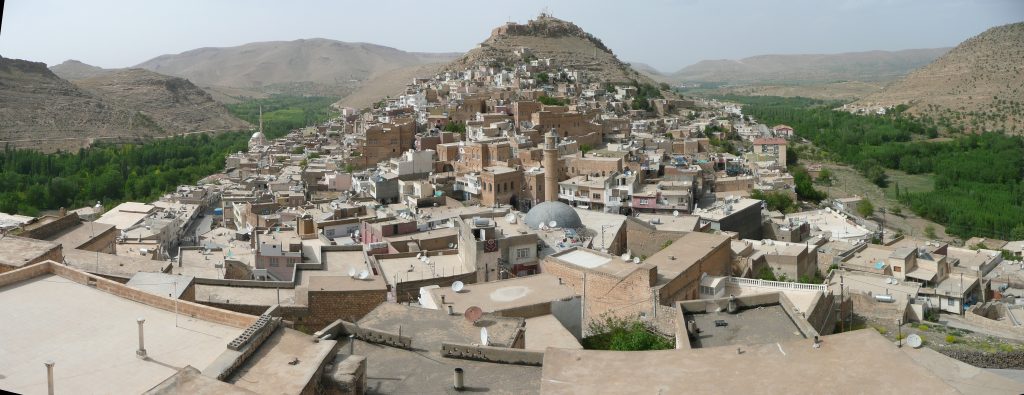
Population
In the kaza Savur, Armenians lived only in the administrative seat; according to the Armenian Patriarchate of Constantinople, their number there was 1,032 before World War I. They maintained one church and two schools with 195 students.[1]
Savur Town
“The town of Sawro is (…) on the ridge of a hill. A river runs in the valley and makes for good crops of fruits and vegetables. It is built on the site of an ancient fortress. For a period it was the seat of a bishopric. Many of the Christians converted to Islam together with the Muhallemi [Mhallami, Mahallami?[2]], and the town held many more Muslims than Christians. Before the World War, it contained 300 Armenian and Syriac Christians. The Agha Petros list gave a Syriac population of 200. The neighboring Kurdish tribes were the Diveran, the Dizveren, the Köse, and the Sürgücü. In June 1915, the local Kurdish chiefs communicated with Mardin asking what should be done with the Christians. The government gave them freedom to do what they liked. The Kurds arrested the males and tortured them. Then they were taken out of jail and killed at a place known as Babein. Only four men were left in the prison, and as they were taken on the highway to Mardin, they were also slain. The Kurds demanded gold, silver, and jewels from the Christian women. They arrested the women and put them under guard in a barracks without food or water. After two days, some were taken out and executed. Many women survived prison and were marched out of town. Along the way, local Kurds came up and seized boys and girls and took them away. They were marched all the way to Nisibin, where they were rested. The next day they marched off and were attacked by Kurdish tribes, who took their clothes and killed them. The bodies were thrown into wells. [Father Hyacinthe] Simon dated this massacre to July 20, 1915, and estimated the number of victims to be more than 650 persons.”
Excerpted from: Gaunt, David: Massacres, Resistance, Protectors: Muslim-Christian Relations in Eastern Anatolia During World War I. Piscataway, NJ: Gorgias Press, 2006, p. 257
According to Raymond Kévorkian, the massacre of Armenian and Syriac Orthodox men took place in June 1915, outside Savur. “The long march of the convoy of women and children began thereafter. It culminated in Karabhond, outside Nisibin – more specifically in a huge well into which the bodies of the last of the deportees were thrown.”[3]